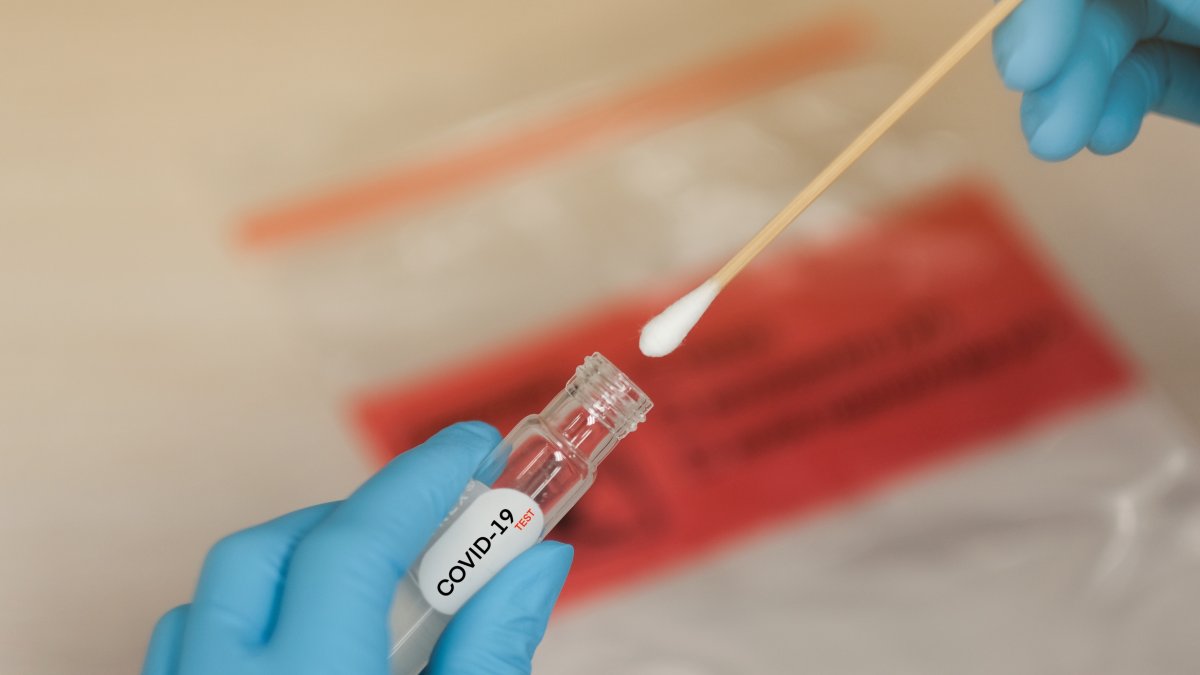A new series of COVID variants, nicknamed the “FLiRT” variant, are being monitored by US health officials, according to the Centers for Disease Control and Prevention.
The variants, identified as KP.1.1 and KP.2, collectively make up more than 32% of COVID cases in the US, according to the latest variant tracking data from the CDC. KP.2, in particular, has the most cases of any variant at 24.9%, according to forecast data for the week ending April 27.
“CDC is monitoring SARS-CoV-2 variants KP.2 and KP.1.1, sometimes referred to as 'FLiRT,' and their potential impact on public health,” CDC told NBC Chicago in a statement. Working to better understand.” “Currently, KP.2 is the dominant variant in the United States, but laboratory testing data indicate low levels of SARS-CoV-2 transmission at this time. This means that while KP.2 is proportionally the most dominant variant , that is, infections are not increasing because transmission of SARS-CoV-2 is low.”
What are the COVID FLiRT variants?
The variants are subvariants of JN.1, which rose to dominance in December 2023 and was named a “variant of concern”, although the “FLiRT” variant has two changes in the spike protein compared to JN.1.
“Two of the changes in spike have been seen in earlier lineages, including the XBB.1.5 lineage, which was dominant throughout 2023 and was the basis for the 2023-2024 vaccine formulation,” the CDC reported.
Health officials said that although there are no indicators that the new strain causes more severe disease than other strains, “CDC will continue to monitor community transmission of the virus and how vaccines perform against this strain.”
Megan L., dean of the Yale School of Public Health. Rainie told WebMD that the changes in the spike protein are worrisome.
How worrying are the new variants?
While the emergence of new variants has raised concerns about a potential surge over the summer, health experts have stressed that COVID levels remain low compared to the beginning of the pandemic.
“I think it's something we're keeping our eye on and, as has been the case before, I think we can expect variants to emerge from time to time,” said Associate Professor Dr. Shivanjali Sankaran. “As COVID continues around the world and in the US.” in infectious diseases at Rush University Medical Center, told NBC Chicago.
CDC data shows that earlier this year, COVID-19 was hospitalizing more people than the flu, but by the end of April hospitalization rates were about the same.
According to the CDC, KP.2 has not yet been linked to an increase in test positivity or hospitalizations. But Sankaran said there could be a spike in transmission as summer gatherings and holidays approach.
“I think we've seen this before with a number of prior variants, where it's not the same as RSV or the flu. [which] It only happens in the winter,” she said. “So that's something to be aware of, especially when the holidays come around again, you know, festivals and things like that. And yes, at this point, we have a very small number of people who are hospitalized or…dying from COVID, but we need to remember that the non-severe side effects, if you will, or the non- -Acute side effects, like developing long-term COVID, or increased risk of developing diabetes and things like that, which are still quite serious and still prevalent when you move around the world This should be taken into account.”
The concerns come two months after the CDC updated COVID-19 guidelines, removing the five-day isolation recommendation. The change marks the first time the US agency has relaxed its COVID isolation recommendations in three years.
Vaccination levels associated with the latest version of the vaccine remain low as experts urge caution.
“That's not to say don't do anything, but just things like get vaccinated — even if the vaccine is not a 100% match, which it hasn't been for some time. We know that even with previous variants unmatched The vaccine provides significant protection against hospitalization,'' Sankaran said, encouraging people who may get sick to mask up where possible.
what are the symptoms?
So far, the symptoms associated with the new variant appear to be similar to those of the previous strain. If you suspect you have been infected with COVID, here are some symptoms you may experience:
- cough
- sore throat
- running nose
- Sneeze
- Tiredness
- Headache
- muscle pain
- sense of smell changed
Last year, a Chicago-area doctor said she had noticed a change in the most common symptoms reported by her patients as the JN.1 variant grew in dominance.
Dr. Chantel Tinfang, a family medicine physician at Sengstack Health Center at Provident Hospital in Cook County, noted at the time that many of the cases she saw had less fever, body aches and chills, and more sore throat, fatigue. Was. And I am coughing.
“We still see some patients experiencing loss of appetite, loss of taste or smell. So it depends,” he said. “One patient was very, very tired. Like she really couldn't do much. And that's when you know… this is different. It's not just coughing and shortness of breath. We're still looking at that “
He suggested consulting your doctor if your symptoms do not improve after the recommended isolation period.
As far as time is concerned, symptoms can last for several days, but in some cases even longer.
According to the CDC, “Some people who are infected with the virus that causes COVID-19 may experience long-term effects from their infection, called long COVID or post-COVID Conditions (PCC).”
Such symptoms may last for weeks and possibly even years.
